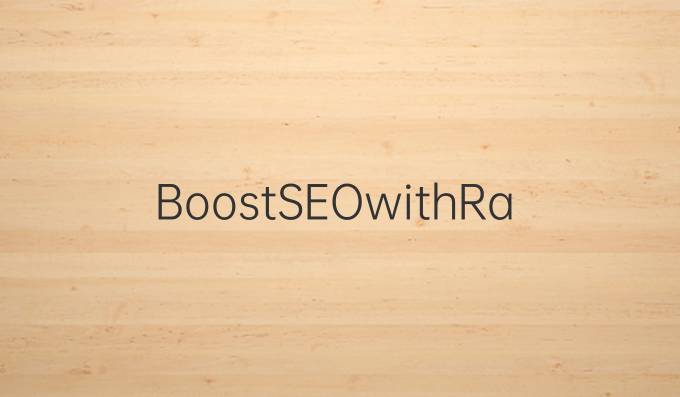
4007-702-802
Follow us on:



The source of the article:ManLang Publishing date:2024-08-01 Shared by:

Abstra: In the competitive world of digital marketing, achieving top search engine rankings quickly can be a gamechanger for businesses looking to increase their online visibility. This article explores rapid keyword ranking strategies to boost SEO and achieve top search results swiftly. We will delve into the critical components of an effeive SEO strategy, including keyword research and seleion, onpage optimization, content creation, and monitoring and adjustment. By focusing on these areas, businesses can implement aionable strategies to improve their search engine rankings and drive more organic traffic to their websites. Each seion provides detailed insights and praical tips to help you accelerate your SEO success and stay ahead in the everevolving digital landscape.
Effeive keyword research is the cornerstone of a successful SEO strategy. Identifying the right keywords can significantly impa your website’s visibility and ranking in search engine results. Start by using keyword research tools such as Google Keyword Planner, SEMrush, or Ahrefs to discover keywords with high search volume and low competition. It’s crucial to focus on longtail keywords, as these often have less competition and are more likely to attra qualified traffic.

Once you have a list of potential keywords, analyze their relevance to your content and target audience. Consider the search intent behind the keywords—whether users are looking for information, produs, or services. Prioritize keywords that align with your business objeives and user intent. Incorporate these keywords naturally into your content, titles, and meta descriptions to improve your chances of ranking higher.
Additionally, monitor keyword performance regularly and adjust your strategy as needed. Trends and search behaviors can change, so staying updated with the latest keyword data will help you maintain and improve your search engine rankings.
Onpage optimization involves tweaking various elements on your website to improve its search engine ranking. Key aspes include optimizing title tags, meta descriptions, header tags, and URL struures. Ensure that your primary keywords are included in these elements, but avoid keyword stuffing, which can negatively impa readability and SEO.
Another critical aspe of onpage optimization is improving site speed. Search engines favor fastloading websites, as they provide a better user experience. Use tools like Google PageSpeed Insights to analyze and enhance your site’s performance. Compress images, leverage browser caching, and minimize code to reduce loading times.
Furthermore, internal linking is a valuable onpage strategy that helps distribute page authority across your site. Link relevant pages to each other using descriptive anchor text. This not only improves navigation but also enhances the overall SEO of your site by signaling to search engines the importance and relevance of your pages.
Highquality content is essential for SEO success. Creating valuable, informative, and engaging content can attra visitors and encourage them to spend more time on your site. Focus on producing content that addresses your audience’s needs and interests. Use your target keywords strategically but maintain natural readability.
Incorporate various content formats such as blog posts, infographics, videos, and podcasts to cater to different preferences and enhance user engagement. Regularly update your content to keep it relevant and aligned with current trends and search queries.
Additionally, consider implementing a content calendar to plan and organize your content creation efforts. A wellstruured calendar ensures consistent posting and helps you cover a wide range of topics related to your industry. This approach not only improves SEO but also establishes your site as an authoritative source of information.
Continuous monitoring and adjustment are crucial for maintaining and improving your SEO performance. Use analytics tools such as Google Analytics and Google Search Console to track your website’s traffic, keyword rankings, and user behavior. Analyze this data to identify areas for improvement and measure the effeiveness of your SEO strategies.
Be prepared to make adjustments based on your findings. If certain keywords are not performing as expeed, refine your content or explore alternative keywords. Stay informed about algorithm updates and industry changes to ensure your SEO praices remain effeive and uptodate.
Regularly review your SEO strategy and set measurable goals to assess progress. By staying proaive and responsive to changes, you can continue to enhance your search engine rankings and achieve longterm success.
Summary: Boosting SEO with rapid keyword ranking strategies requires a multifaceted approach encompassing keyword research, onpage optimization, content creation, and ongoing monitoring. By seleing the right keywords, optimizing onpage elements, creating highquality content, and making datadriven adjustments, businesses can achieve top search results quickly. Implementing these strategies effeively will improve online visibility, drive organic traffic, and enhance overall digital marketing efforts. Embrace these techniques to stay ahead of the competition and achieve lasting SEO success.
Key words: SEOwith SEOwithRapid SEOwithRapidKeyword
What you might be interested in
Building a Compelling Lawyer Website: Strategies for Effeive Online Presence and Client Engagement
2025-04-22Maximizing Internal Page SEO: Strategies to Boost Your Websites Visibility and User Engagement
2025-04-22Building Effeive Portal Websites: A Comprehensive Guide to Design, Development, and User Engagement
2025-04-22Comprehensive Guide to Website Optimization Outsourcing Costs: Faors, Pricing Models, and How to Cho
2025-04-22Quick Strategies for SEO Optimization: Mastering Keyword Efficiency for Rapid Results
2025-04-22Understanding the Differences Between SEM and SEO: Strategies for Effeive Online Marketing
2025-04-22Mastering Keyword Optimization: Effeive Strategies for Enhanced Search Visibility and Improved SEO P
2025-04-22Unlocking Success: The Ultimate Guide to Mastering Content Marketing Keywords for Maximum Engagement
2025-04-22What you might also be interested in
Optimizing Your Account: A Comprehensive Guide to Enhancing Performance and Engagement with SEM Stra
2025-01-05Optimizing Keyword Strategies for SEM Success: A Comprehensive Guide
2025-01-29Mastering Content Marketing: Strategies to Engage Your Audience and Drive Success
2024-09-12The Power of Content Marketing: Achieving Your Business Goals Through Strategic Storytelling
2024-05-19Crafting Effeive Produ Content Marketing Strategies for 2024
2025-01-01Mastering Web Design: A Comprehensive Guide to Building Stunning Websites
2024-12-30Master the Art of SEO Network Promotion: Unleashing the Potential of Professional Online Marketing
2024-03-25